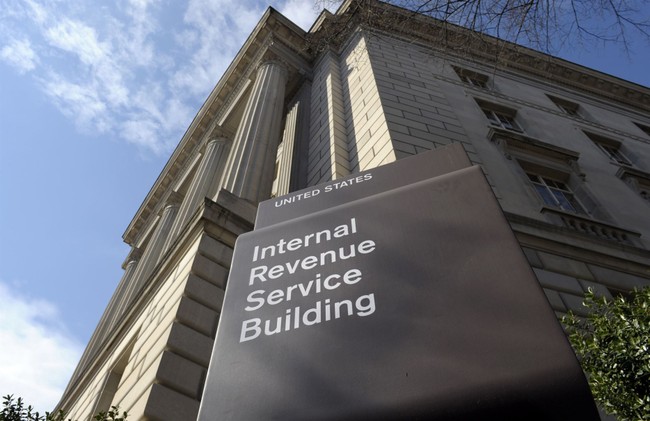KEY POINTS FROM THIS ARTICLE
— A congressional forecasting model using political and economic fundamentals suggests that Republicans are favored to flip both the House and the Senate.
— A modified version of the model that also incorporates expert analysis also suggests that Republicans are favored in both chambers, but by less than the model that does not incorporate such analysis.
Two different 2022 House/Senate models
In order to forecast the 2022 congressional elections, we first draw on our structural model, which we have regularly used to generate before-the-fact forecasts in past midterm contests, namely 2018, 2014, and 2010. The model bases itself on political and economic fundamentals and receives formulation in a political economy equation. For the House, it begins with the classic theory of Edward Tufte, who argued midterms stand as a referendum on the president and the incumbent party. Midterm voters are assumed to judge the president’s actions on key economic and key non-economic issues assessed on aggregate-level data. While these models are appearing in the Crystal Ball around Labor Day, the actual predictions (both for this year and previous years) are based on indicators from earlier in the summer, meaning that these projections are made several months in advance of Election Day. (This lead time of several months, from measures in mid-summer, may surprise some. However, we have found this distance of 3-4 months before the election actually tends to optimize forecasting accuracy. Put another way, forecasts on the heels of the election should not perform as well as these.)
For the Senate, we follow the same theory, with the addition of a “seats up” variable to account for the different election calendar of that chamber. We then build on our structural model with expert input, as we did in 2014 and 2018, which results in House and Senate forecasts using what we call Structure-X models.
Below we use our structural model to look first at the House and the Senate, before turning to our Structure-X model forecasts.
As shall be seen, the Democrats appear likely to lose control of both chambers, according to both of these models.
The structural model House forecast
We generate a 2022 forecast from the structural model offered in the following equation:
House Seat Change = Presidential Approval + Disposable Income + Midterm
OLS yields the following results:
HS = -37.62* + 0.78*P + 3.23*I – 31.85*M
(-2.91) (3.10) (2.08) (-5.11)
R2 = .55, adj. R2 = .51, RMSE = 18.82, D-W = 1.79, N = 37
In the formula:
HS = presidential party seat change in the House of Representatives
P = June Gallup poll presidential popularity rating from Gallup’s Presidential Approval Center
I = change in real disposable income, for the initial 6 months of the election year (from the Bureau of Economic Analysis’s National Income and Product Account: Personal Income and Its Disposition)
M = midterm dummy (0 = presidential election, 1 = midterm election)
Figures in parentheses are t-scores, * = statistical significance beyond .05, R2 = coefficient of multiple determination, adj. R2 = adjusted coefficient of multiple determination, RMSE = root-mean-square error, D-W = Durbin Watson statistic, and N = the elections from 1948 to 2020.
To forecast the 2022 seat change, we insert the independent variable values:
P = 41 (June 2022)
I = -2.12 (December 2021 through June 2022)
M = 1
Thus, the 2022 forecast = -44 seat loss for the Democrats in the House.
The structural model Senate forecast
The structural model for the Senate reads as follows:
Senate Seat Change = Presidential Approval + Disposable Income + Midterm + Seats up
OLS, applied to the Senate political economy equation, yields the following results:
SS = 2.89 + 0.12*P + 0.57*I – 2.92*M – 0.62* Seats Up
(1.00) (3.00) (2.24) (-2.86) (-5.49)
R2 = .62, adj. R2 = .58, RMSE = 2.86, D-W = 1.58, N = 37
where SS = presidential party seat change in the Senate
P = June Gallup poll presidential popularity rating from Gallup’s Presidential Approval Center
I = change in real disposable income, for initial six months of the election year (from the Bureau of Economic Analysis’s National Income and Product Account: Personal Income and Its Disposition)
M = midterm dummy (0 = presidential election, 1 = midterm election)
Seats Up indicates the number of seats the president’s party has up for reelection
Figures in parentheses are t-scores, * = statistical significance beyond .05, R2 = coefficient of multiple determination, adj. R2 = adjusted coefficient of multiple determination, RMSE = root-mean-square error, D-W = Durbin Watson statistic, and N = the elections from 1948 to 2020.
To forecast the 2022 seat change, we insert the independent variable values:
P = 41 (June 2022)
I = -2.12 (December 2021 through June 2022)
M = 1
Seats Up = 14
Thus, the 2022 structural model forecast = -5 seat loss for the Democrats in the Senate.
The Structure-X House forecast
To take local factors at the district and state levels into account, we use expert judgement to buttress our structural model forecasts. Our Structure-X forecast models for the House and Senate combine structural models with expert judgements. Specifically, we use the data from the June ratings from Inside Elections with Nathan L. Gonzales to estimate a seat change prediction that we then average with our Structural model forecast.
Inside Elections (formerly the Rothenberg Political Report) regularly rates each congressional race as either a solid seat or a battleground seat for either the Democratic or Republican party. Battleground seats are seats rated as either a toss-up or likely, leaning, or tilting for either party.
To make our expert (X) forecast, we subtracted the presidential party’s number of battleground seats from the out-party’s number of battleground seats. For June 2022, Gonzales rated 23 Republican seats as battleground races, versus 53 for the Democrats. The X-number is thus calculated as 23 – 53 = -30. This expert index forecast (-30) is less than our structural model forecast (-44). To reconcile these two methods, we combine the 2 numbers into 1 simply by averaging the 2 estimates to get a Structure-X model forecast of (-44-30)/2 = -37.
Again, not good news for Democrats as the speaker’s gavel is forecast to change hands from Nancy Pelosi (D-CA) to Kevin McCarthy (R-CA).
The Structure-X Senate forecast
Inside Elections in June 2022 rated 4 Republican seats as battleground races, versus 5 for Democrats. Thus, the X-number is calculated as 4 – 5 = – 1. Again, this expert index (- 1) is less than our structural forecast of a 5-seat loss for Democrats. The average of these 2 forecasts gives us a Senate Structure-X model forecast of (-5-1)/2 = -3, meaning the Senate is predicted to switch to Republican control in 2023 as well as the House.
Conclusion
These point estimates for Democratic losses, while not small, are not a “wave” rejection of the Democrats in Congress. However, they do suggest the strong likelihood that they will lose control of both chambers.
Of course, there exists some uncertainly regarding these forecasts. For example, considering the structural model alone, the root mean-squared error implies, on average, out-of-sample forecasts could be off, plus or minus, about 19 seats in the House, and about 6 seats in the Senate. Even the most optimistic allocation of such errors, i.e., plus 19 seats more for the House and plus 6 more for the Senate, would not save the House for the Democrats, and could put the Senate in the sort of partisan deadlock it has now, perhaps saving the Democrats’ slim majority. Consideration of the structure-X forecasts are somewhat more optimistic. The contests are still a couple of months away, and the Democratic ship might sail in; but at this point it’s pretty far offshore.
| Charles Tien is Professor of Political Science at Hunter College and the Graduate Center, CUNY. Michael S. Lewis-Beck is F. Wendell Miller Distinguished Professor of Political Science at the University of Iowa and co-author of the book Forecasting Elections, plus author or co-author of over 320 scholarly publications. |




















Discussion about this post